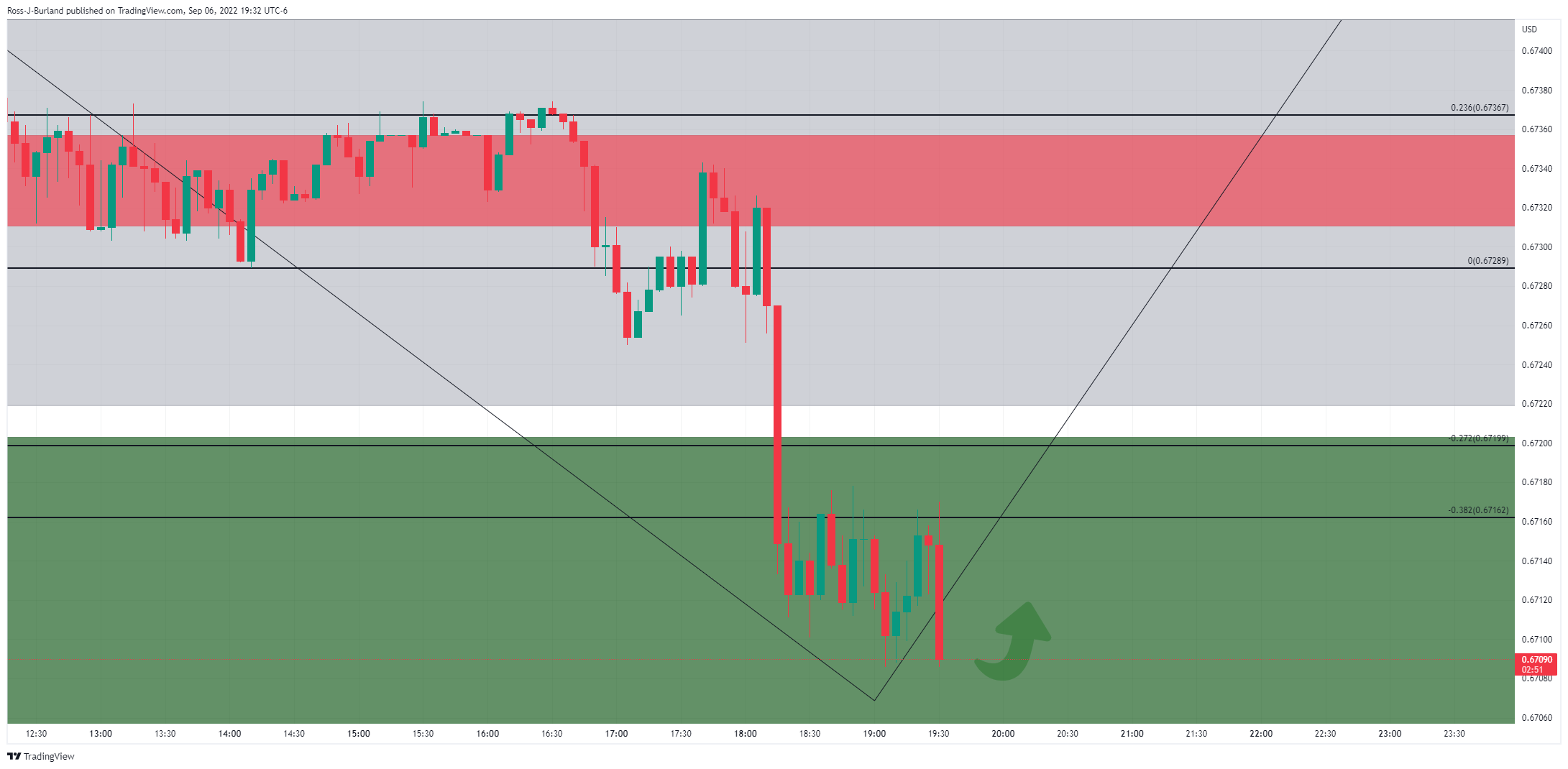- Aussie GDP: Misses the mark QoQ and AUD under some pressure
Market news
Aussie GDP: Misses the mark QoQ and AUD under some pressure
Australia's Gross Domestic Product data for the second quarter has been released as follows:
Australian GDP SA (QoQ) Q2: 0.9% (est 01%; prev 0.8%) - GDP (YoY) Q2: 3.6% (est 3.4%; prev 3.3%)
This is a slight weight to the Aussie that is trying to make a fresh low for the day:

We have resistance around 0.6735 as the price currently takes on the -38.2% extension of the prior bearish impulse. Above the resistance, eyes will be on the 0.6775 area around the Wall Street opening highs.
Prior to the release, it was explained that analysts at ANZ bank explained that ''from a policy perspective it will be the inflation indicators in the GDP report that are key. The RBA’s preferred measure of wider labour costs – non-farm average earnings per hour – looks to have grown at an annual pace of just over 4% in the June quarter.''
Despite the miss in the quarterly headline, this leaves a bullish bias on the charts for the data given that labour costs are clearly trending higher.
The analysts at ANZ Bank also note that ''household consumption deflator and broader GDP deflator also look to have risen strongly, suggesting still-intense inflationary pressures.''
About Aussie GDP
The Australian Bureau of Statistics (ABS) releases the Gross Domestic Product (GDP) on a quarterly basis. It is published about 65 days after the quarter ends. The indicator is closely watched, as it paints an important picture of the economy. A strong labour market, rising wages and rising private capital expenditure data are critical for the country’s improved economic performance, which in turn impacts the Reserve Bank of Australia’s (RBA) monetary policy decision and the Australian dollar. Actual figures beating estimates is considered AUD bullish, as it could prompt the RBA to tighten its monetary policy.